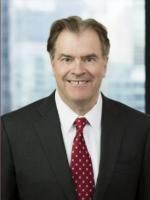The House of Representatives recently passed The Securing a Strong Retirement Act of 2022 (H.R. 2954), also known as the “Secure Act 2.0,” which would expand and encourage retirement savings by an overwhelming vote of 414-5. The Senate is expected to consider a similar version of this legislation in later in 2022. In light of the overwhelming bipartisan support which Secure Act 2.0 received in the House, bipartisan support in the Senate is also anticipated. If enacted, the effective date of the legislation should be in 2023 or later. We are monitoring the status of the legislation in Congress and will issue further updates.
Secure Act 2.0 continues the expansion of retirement benefits started by the Secure Act, which was enacted in 2019. The Secure Act made Multiple Employer Plans available to more employers; increased tax credits to small employers who implement a plan; expanded plan coverage for part-time employees; permitted in-service distributions from defined benefit plans at age 59 ½; and raised the age at which distributions from a plan must begin.
Secure Act 2.0 would provide for the following:
-
Increase the age at which required minimum distributions (“RMDs”) must begin. The Secure Act increased the age at which RMDs must begin from 70 ½ to 72. Secure Act 2.0 phases in an increase in the age at which RMDs must begin to age 75 as follows:
| Based on Age | Age for Beginning RMDs |
| Attains age 72 after 12/31/2022 and age 73 before 1/1/2030 |
73 |
| Attains age 73 after 12/31/2029 and age 74 before 1/1/2023 |
74 |
| Attains age 74 after 12/31/2032 | 75 |
In addition, Secure Act 2.0 would reduce the penalty imposed on plan participants for failing to take an RMD from 50%, to 25%. If the failure to distribute the RMD is promptly corrected, the penalty tax is further reduced to 10%.
-
Expansion of Automatic Enrollment. Presently, 401(k) plans are permitted, but are not required, to have automatic enrollment under which employees have a percentage of compensation withheld and contributed to the employer’s 401(k) plan. The employee has the ability to elect out of the automatic enrollment arrangement and receive a refund of amounts withheld.
Secure Act 2.0 would require employers to provide for automatic enrollment in their 401(k) plans. There would be exceptions for existing 401(k) plans, new businesses in existence for less than 3 years, and small businesses with no more than 10 employees.
A failure to automatically enroll an employee could be corrected by contributing to the plan within 9 ½ months after the end of the plan year in which the error occurred.
-
Increased Catch-Up Contributions. Under current law, a participant who has attained age 50 can make a catch-up contribution of $6,500 to a 401(k) plan. Secure Act 2.0 would increase this limit to $10,000 for participants who are age 62, 63 or 64 during the taxable year. The $10,000 limit would be adjusted annually for increases in the cost of living.
-
Expansion of Plan Corrections. The IRS’ Employee Plans Compliance Resolution System (“EPCRS”), permits the correction of plan failures while preserving the qualified status of the plan. Some types of significant errors can be self-corrected, if the correction occurs within three years. An example of a significant error eligible for self-correction is the inadvertent exclusion of a large group of employees from a plan for several years. Secure Act 2.0 would expand the ability to self-correct significant errors by removing this three-year time limit. Thus, an employer may self-correct a significant plan error, provided that the correction is started before the employer receives notification of an IRS audit of the plan.
-
Expanded Coverage for Part-Time Workers. Typically, a qualified plan may require an employee to complete least 1,000 hours of service during a year to be eligible to participate. Under the Secure Act, an employee who works at least 500 hours in each of three consecutive 12-month periods and who has attained age 21 is eligible to make 401(k) contributions. The part-time employee would not be eligible to receive employer contributions. Secure Act 2.0 would reduce this requirement to two consecutive 12-month periods in which the employee works at least 500 hours.
-
Tax Deferral on Sale of S Corporation Stock to an ESOP. Under current law, a shareholder of a C corporation may defer the gain on the sale of the corporation’s stock to an Employee Stock Ownership Plan (“ESOP”) if the proceeds of the sale are reinvested in qualified replacement property. The gain is deferred until the shareholder disposes of the qualified replacement property.
Under Secure Act 2.0, this tax deferral would be expanded to allow deferral of 10% of the gain on the sale of S corporation stock to an ESOP.
-
Expansion of Availability of MEPs to 403(b) Plans. The Secure Act increased the availability of Multiple Employer Plans (“MEPs”) to for-profit entities. Secure Act 2.0 would apply similar rules to 403(b) plans, thus allowing not-for-profit entities to also participate in Multiple Employer Plans.




 />i
/>i

